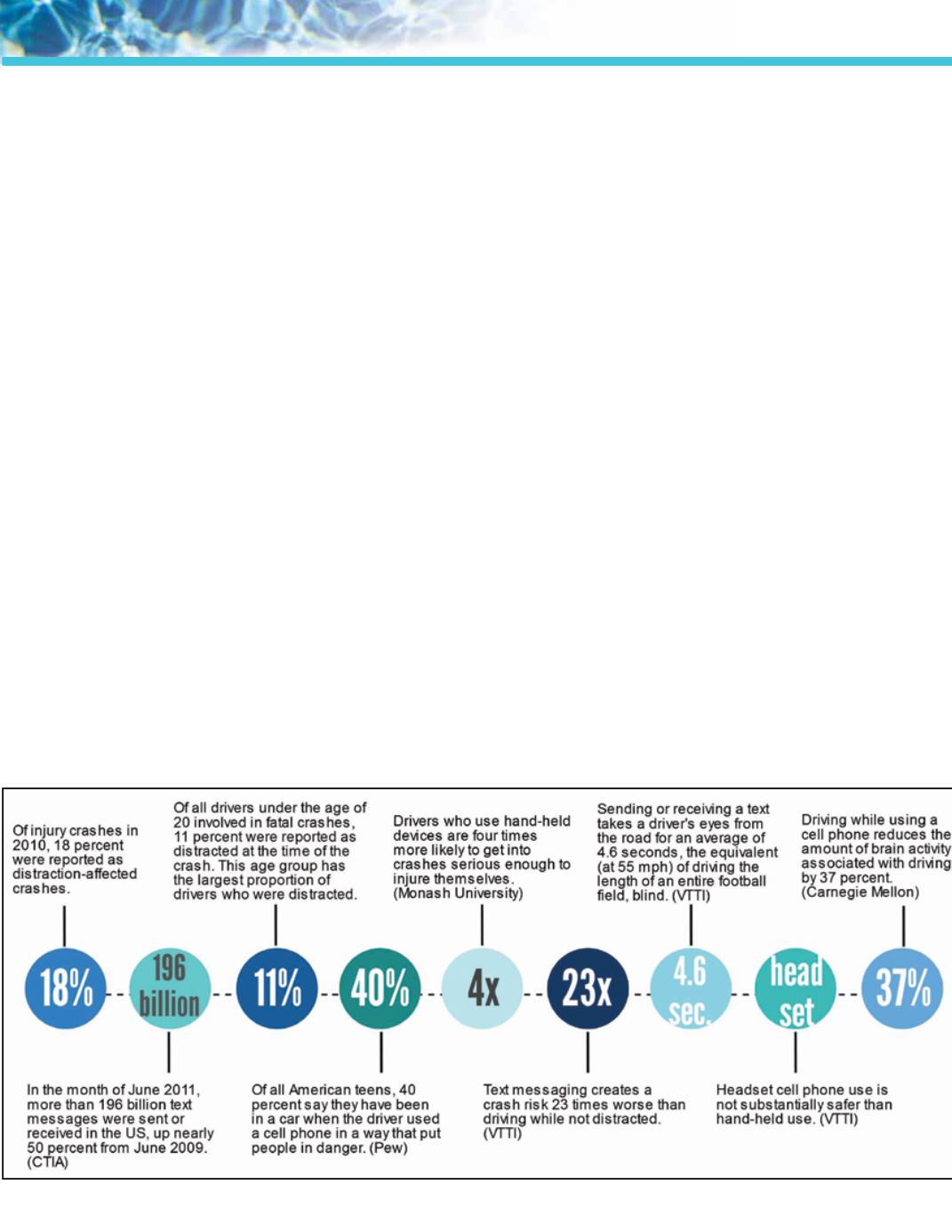
Florida Pool Pro
sm
• November 2014
21
• Using a navigation system
• Watching a video
• Adjusting a radio, CD player, or MP3 player
Because text messaging requires visual, manual, and cognitive attention
from the driver, it is by far the most alarming distraction.
Consider the following facts:
1.Of injury crashes in 2010, 18 percent were reported as distraction-affected
crashes.
2.In the month of June 2011, more than 196 billion text messages were
sent or received in the US, up nearly 50 percent from June 2009. (CTIA)
3.Of all drivers under the age of 20 involved in fatal crashes, 11 percent
were reported as distracted at the time of the crash. This age group has
the largest proportion of drivers who were distracted.
4.Of all American teens, 40 percent say they have been in a car when the
driver used a cell phone in a way that put people in danger. (Pew)
5.Drivers who use hand-held devices are four times more likely to get into
crashes serious enough to injure themselves. (Monash University)
6.Text messaging creates a crash risk 23 times worse than driving while
not distracted. (VTTI)
7.Sending or receiving a text takes a driver’s eyes from the road for an


